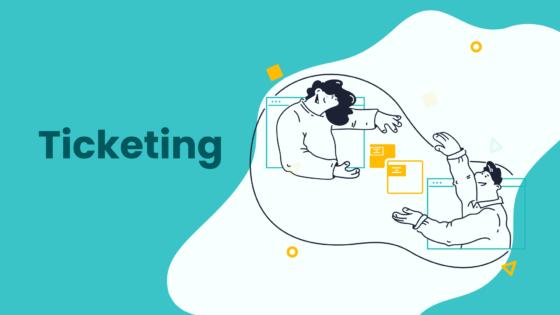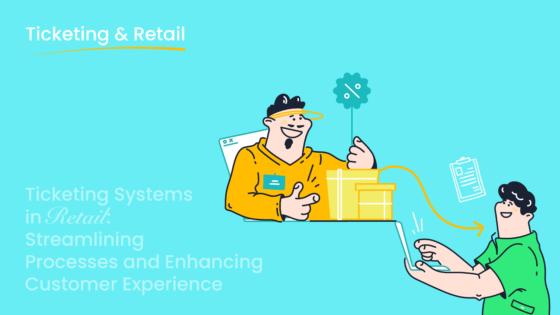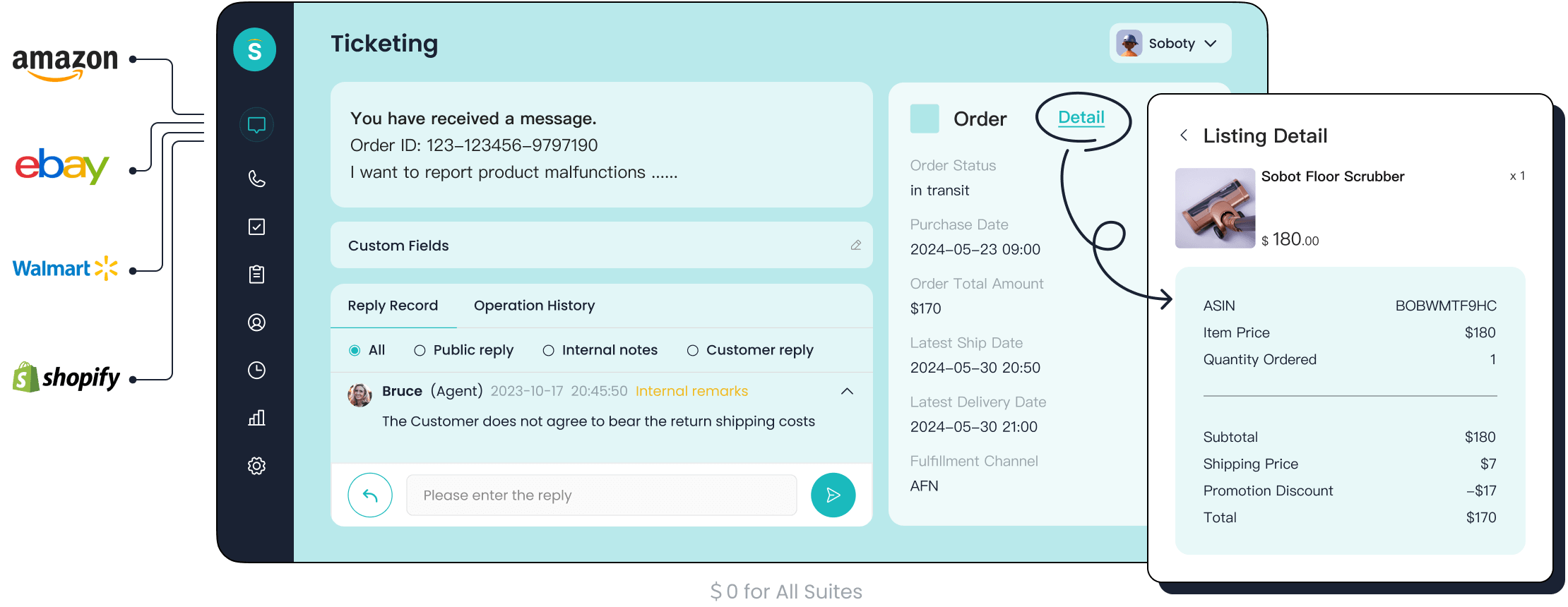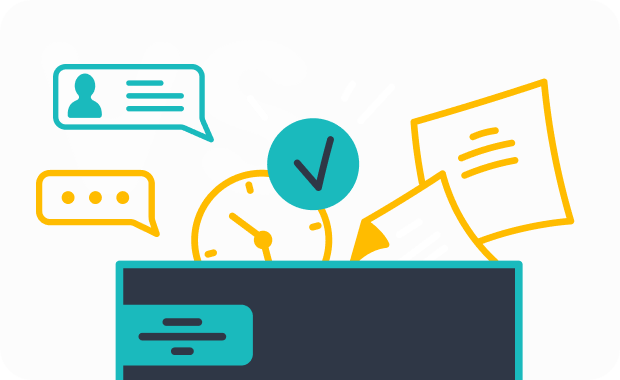Best Tools and Techniques for Customer Journey Enhancement

Customer journey enhancement relies on the right combination of customer journey mapping tools and proven techniques. Companies that invest in journey mapping tools see measurable gains: between 2021 and 2023, returning shoppers increased by 59%, and organizations using data-driven mapping reported up to 84% revenue growth.
| Metric / Outcome | Statistic |
|---|---|
| Sales & Marketing ROI | 87% |
| Reduced Service Costs | 15-20% |
| Customer Retention | 50% |
| Revenue Growth | 84% |
Sobot AI provides customer journey mapping tools that unify channels and automate support, helping teams track key metrics like Customer Effort Score and Net Promoter Score. Every business should align its journey mapping tools with its service model, team size, and tech stack to maximize results.
Why Customer Journey Enhancement Matters
Customer Experience Impact
Customer journey enhancement shapes every stage of customer interactions. Today, 80% of customers say experience is as important as products or services. When companies deliver positive customer experiences, they see higher loyalty and more referrals. Metrics such as Net Promoter Score (NPS), Customer Satisfaction Score (CSAT), and Customer Effort Score (CES) help measure these outcomes. For example, a high NPS shows that customers are likely to recommend a brand, while a low CES means customers find it easy to get help. Businesses that track these metrics can quickly spot pain points and improve customer interactions. Sobot’s unified platform helps teams monitor these scores in real time, making it easier to deliver consistent, high-quality service.
Note: 73% of customers will switch to a competitor after multiple bad experiences, and over half will leave after just one. Personalization also matters—66% of customers stop supporting brands that do not offer tailored experiences.
Business Value
Customer journey enhancement drives real business growth. Companies that invest in customer experience can expect an average additional revenue of $700 million within three years for every $1 billion earned annually (source). Brands with excellent customer experience generate 5.7 times more revenue than those with poor experiences. A 5% increase in customer retention can boost profits by up to 95%. Customer journey optimization helps identify opportunities to personalize and streamline customer interactions, leading to higher conversion rates and greater loyalty. Sobot’s omnichannel solutions support these goals by integrating data and automating workflows, which helps businesses scale their customer experience efforts efficiently.
- 86% of buyers are willing to pay more for a great customer experience.
- Customers spend up to 140% more after positive experiences.
Service and Support Challenges
Many companies struggle with fragmented customer interactions and slow support. Customer journey enhancement addresses these challenges by mapping every touchpoint and removing friction. For example, streamlining onboarding reduces support tickets and increases customer satisfaction. Mapping emotional journeys helps teams address stress points, such as anxiety during account approval. Sobot’s ticketing system automates ticket routing and provides real-time updates, making support more accessible and efficient. Cross-departmental collaboration improves when teams share insights from journey mapping, leading to faster resolutions and better alignment. Continuous improvement, driven by customer feedback, reduces churn and increases engagement.
- Companies improving customer experience see employee engagement rise by 20%.
- 88% of companies now prioritize customer experience in contact centers.
Customer Journey Mapping Techniques

Empathy Mapping
Empathy mapping helps teams understand what customers think, feel, say, and do. This technique uses direct contact with users, interviews, and storytelling to build real empathy. Research shows that empathy mapping synthesizes user research findings and visualizes experiences, which leads to better customer insights. Teams often use qualitative interviews and cluster data to create personas. They then develop empathy maps for each persona, capturing key emotions and behaviors. Companies like Sobot use empathy mapping to train staff and improve support processes. This approach helps businesses see the world through their customers’ eyes, leading to more authentic service and product design.
Tip: Empathy mapping works best when teams use real customer stories and update maps regularly.
Journey Mapping
Journey mapping visualizes every step a customer takes with a brand. Research from Savanta and McKinsey shows that customer journey mapping can increase satisfaction by 20%, boost revenue by 15%, and reduce service costs by up to 20%. Teams use surveys, interviews, and analytics to identify touchpoints and pain points. Customer journey maps help businesses spot where customers struggle and where they feel delighted. Sobot’s omnichannel solutions support customer journey mapping by integrating data from all channels, making it easier to track and improve each stage of the journey.
Experience Mapping
Experience mapping looks at the broader context of customer interactions. It covers not just the steps but also the emotions and motivations behind each action. Experience mapping helps teams understand the full picture, from first contact to long-term loyalty. By plotting emotional highs and lows, companies can identify moments that matter most. This technique supports customer journey mapping by adding depth to the analysis. Sobot’s analytics tools help visualize these experiences, allowing teams to make data-driven improvements.
Service Blueprinting
Service blueprinting maps both the visible and invisible parts of a service. It details customer actions, employee roles, and support processes. Service blueprinting helps teams find bottlenecks and inefficiencies. It clarifies responsibilities and improves communication. Studies show that service blueprinting supports strategic planning and continuous improvement. Sobot’s ticketing system uses service blueprinting principles to automate workflows and streamline support. This leads to faster resolutions and higher customer satisfaction.
- Service blueprinting provides a holistic view of the service process.
- It fosters collaboration and helps teams spot areas for efficiency gains.
Choosing the Right Technique
Selecting the right customer journey mapping technique depends on business goals and customer needs. Teams should map what customers think and feel, use color-coded notes for clarity, and capture both frontstage and backstage actions. Focusing on specific journeys, such as onboarding or support, keeps maps clear and actionable. Stakeholder buy-in and clear visualization tools are essential. Sobot’s unified platform supports all these techniques, helping businesses create effective customer journey maps that drive real results.
Customer Journey Mapping Tools Overview
Key Features
Customer journey mapping tools offer essential features that help businesses understand and improve customer experiences. Most journey mapping tools allow teams to create detailed customer journey maps with personas, phases, and actions. Survey data shows that most users believe these tools improve job performance, with only 17% disagreeing. Many marketers validate journey map accuracy by comparing funnel stages with CRM reports, which highlights the value of quantitative validation. Leading customer journey mapping tools integrate web analytics, session replays, and struggle scores to pinpoint pain points and abandonment causes. Sobot’s platform, for example, provides unified handling of customer data and automates ticket management, making it easier to track and resolve issues across all channels.
Real-world examples show that journey mapping tools can prevent significant revenue loss. For instance, a fashion brand used session replays to identify a dead link, avoiding a $1 million annual loss.
Collaboration and Integration
Effective customer journey mapping relies on collaboration and integration features. Journey mapping tools often include shared workspaces, real-time editing, and project management integrations. Research shows that collaboration across departments improves alignment and productivity. Teams using integrated communication tools, such as Slack or shared project platforms, break down silos and streamline workflows. Sobot’s omnichannel solution enables seamless collaboration by unifying customer interactions from multiple channels into one workspace. Automated workflows and centralized knowledge bases further enhance team efficiency and ensure everyone works with the same information.
- Collaboration features in journey mapping tools help teams align on goals and share best practices.
- Integration with platforms like Shopify or Salesforce ensures customer journey mapping tools fit into existing tech stacks.
Analytics and Visualization
Analytics and visualization capabilities set advanced customer journey mapping tools apart. These tools track key metrics such as conversion rates, time on page, repeat visits, and customer retention. Visualization features, like sunburst charts and conversion funnels, help teams spot drop-off points and behavior patterns. Sobot’s analytics dashboard provides real-time insights into customer journeys, including Net Promoter Score and Customer Effort Score. Session replays and heatmaps show exactly how users interact with websites or apps, making it easier to identify and fix issues. These analytics empower teams to make data-driven decisions and continuously improve customer journey mapping.
Tip: Use analytics from journey mapping tools to monitor digital experience scores and optimize every stage of the customer journey.
Customer Journey Mapping Tools Comparison
Sobot Ticketing System

Sobot Ticketing System stands out among journey mapping tools for its unified approach to customer interactions. The platform brings together email, chat, voicemail, and even e-commerce channels like Shopify into a single workspace. Teams can manage every customer touchpoint without switching between systems. Sobot’s automation features, powered by advanced AI, handle ticket creation, routing, and response. This reduces manual work and speeds up resolution times. The system supports multilingual communication, making it ideal for global businesses.
Analytics play a central role in Sobot’s offering. The dashboard provides over 300 statistical reports, tracking thousands of indicators. Managers can monitor metrics such as Net Promoter Score, Customer Effort Score, and ticket resolution rates in real time. These insights help teams identify pain points and optimize customer journeys. Sobot’s omnichannel support ensures that every customer journey mapping project captures the full scope of customer interactions, from first contact to resolution.
Sobot’s clients, including Samsung and Michael Kors, have reported up to 95% customer satisfaction and an 83% reduction in response time after implementing the system.
Other Leading Tools
Many journey mapping tools offer specialized features for different business needs. Smaply provides persona and stakeholder mapping with a drag-and-drop editor, making it accessible for beginners and teams. Miro serves as a digital whiteboard, supporting real-time collaboration and interactive notes. Lucidchart focuses on diagramming and integrates with productivity apps, which helps business teams visualize complex processes. UXPressia offers journey maps and AI-powered persona tools, while Custellence provides expert templates for complex mapping.
Some platforms, like Qualtrics XM and Adobe Experience Platform, target enterprises with advanced AI, analytics, and visualization. These tools often require custom pricing and offer deep integration with CRM and marketing systems. Hotjar delivers visual analytics, such as heatmaps and session recordings, which help teams optimize websites and apps. Each of these journey mapping tools brings unique strengths, from collaboration features to advanced analytics.
Companies using journey analytics tools like these report a 21-50% increase in customer satisfaction and a 10-20% boost in revenue (source).
Comparison Table
The following table summarizes key features, pricing, and strengths of leading customer journey mapping tools. This customer journey mapping tools comparison helps businesses select the right solution for their needs.
| Tool Name | Key Features & Strengths | Pricing Model & Details | Target Audience | Unique Selling Points |
|---|---|---|---|---|
| Sobot Ticketing System | Omnichannel support, AI automation, advanced analytics, multilingual, e-commerce integration | Custom, cost-effective | All business sizes | Unified platform, 300+ reports, fast ROI |
| Smaply | Persona, stakeholder maps, drag-drop editor | Free + upgrades | Beginners, teams | Stakeholder mapping |
| Miro | Digital whiteboard, real-time collaboration | Free & paid plans | Remote teams | Interactive notes |
| Lucidchart | Diagramming, data linking, integrations | Paid only | Business teams | Productivity app integrations |
| UXPressia | Journey maps, personas, AI persona tool | Free & paid plans | Teams & marketers | Mobile app mapping |
| Custellence | Complex maps, expert templates | Free & paid plans | CX professionals | Detailed sub-lanes |
| Qualtrics XM | AI, analytics, visualization | Starting at $1,500/month (SMB) | Medium to large | Advanced analytics, CRM integration |
| Adobe Experience Platform | Advanced AI, data integration | Custom quote-based (enterprise) | Enterprises | Real-time journeys, Adobe ecosystem |
| Hotjar | Heatmaps, session recordings, feedback tools | $39+/month | SMBs, enterprises | Visual analytics, user feedback |
Tip: When evaluating journey mapping tools, consider integration capabilities, analytics depth, and pricing models. Many tools offer free trials or tiered plans, making it easier to pilot before full implementation.
Customer journey mapping tools continue to evolve as businesses demand more automation, better analytics, and seamless integration. Sobot Ticketing System delivers a comprehensive solution by combining omnichannel support, powerful automation, and industry-leading analytics. This approach helps businesses improve customer interactions, increase satisfaction, and drive measurable results.
Decision Framework for Journey Mapping Tools
Assessing Needs
Selecting the right journey mapping tools starts with a clear understanding of business goals and customer needs. Teams should identify every customer touchpoint, from social media to email and website interactions. This ensures that customer journey mapping covers the full experience. Companies must look for tools that capture key metrics at each stage, such as click-through rates, conversions, and customer satisfaction scores. These metrics help teams spot pain points and improve the user experience.
A practical approach involves reviewing the following considerations:
- Map all customer touchpoints across channels.
- Choose tools that track both qualitative and quantitative data.
- Prioritize integration with existing CRM and business systems.
- Assess scalability and customization for changing needs.
- Evaluate ease of setup and adoption.
- Consider vendor support and training resources.
- Analyze pricing, ROI, and business impact.
- Look for features like data visualization and collaboration tools.
| Metric / Consideration | Description / Business Need |
|---|---|
| Retention Rates | Measure customer lifecycle and reduce churn by addressing pain points early. |
| Marketing ROI | Track improvements in marketing spend efficiency; journey mapping tools can boost ROI by up to 54%. |
| Conversion Rates at Funnel Stages | Monitor conversion rates before and after implementing journey mapping tools. |
| Customer Satisfaction Scores | Assess satisfaction at each touchpoint to identify and fix pain points. |
| Support Ticket Volume | Track ticket volume to spot operational issues and reduce costs. |
| Customer Lifetime Value (CLV) | Measure changes in CLV to show financial impact of improved journeys. |
| Net Promoter Score (NPS) Trends | Monitor loyalty and advocacy over time. |
| Integration Capabilities | Ensure compatibility with CRM and marketing automation for seamless workflows. |
| Scalability and Customization | Adapt tools to evolving customer needs and feedback types. |
| Ease of Use | Encourage team adoption with an intuitive interface. |
| Vendor Support | Access dedicated managers, training, and responsive support. |
| Data Capture at Touchpoints | Collect data across all channels for a complete view. |
| ROI Measurement | Use before-and-after metrics to justify investment. |
Sobot’s customer journey mapping tools provide unified analytics, omnichannel support, and customizable dashboards. These features help businesses track every metric and adapt quickly as customer needs change.
Integration Considerations
Integration plays a critical role in the success of journey mapping tools. Companies benefit when their tools connect with over 500 marketing and sales platforms, including CRM and social media. This level of integration gives teams a detailed view of customer interactions and supports interactive visualizations. Teams can identify patterns, pain points, and opportunities more easily.
Effective customer journey mapping requires input from marketing, sales, customer service, and IT. Real customer data from surveys, reviews, and direct interactions ensures that journey maps reflect reality. Integration with support ticket analytics, Net Promoter Scores, and customer satisfaction metrics provides actionable insights. For example, 96% of consumers expect seamless omnichannel experiences, but many businesses fall short. Integrated journey mapping tools help close this gap by enabling unified agent desktops and omnichannel routing.
Sobot’s journey mapping tools offer seamless integration with platforms like Shopify and Salesforce. This ensures that all customer data flows into a single workspace, making it easier for agents to deliver consistent service and for managers to monitor performance.
Tip: Involve frontline staff, executives, and channel owners in the integration process to ensure a complete and accurate view of the customer journey.
Implementation Steps
Successful implementation of customer journey mapping tools follows a series of proven steps. Teams should start by creating data-driven personas using real customer data. Integrating both qualitative and quantitative data sources, such as interviews and analytics, gives a full picture of customer behavior.
- Set clear objectives that align with business goals and KPIs.
- Develop detailed personas based on actual data and interviews.
- Map all customer touchpoints, including current and desired interactions.
- Build and validate the map by capturing customer actions, needs, and pain points.
- Continuously refine the map using analytics and direct feedback.
- Collaborate across teams, including customer service, sales, IT, and legal.
- Visualize both customer-facing and backstage processes.
- Maintain journey maps as living documents, updating them regularly.
Spotify and Netflix have shown that combining qualitative and quantitative data leads to better customer satisfaction and design improvements. Sobot’s journey mapping tools support these steps with features like automated ticket routing, real-time analytics, and customizable templates. These tools help teams pilot solutions, gather feedback, and scale successful practices across the organization.
Note: Use visual elements and color coding to make journey maps easy to understand for all team members.
Sobot in Action: Customer Success Story

Michael Kors Case Study
Michael Kors, a global leader in luxury fashion, faced challenges in delivering seamless customer experiences across multiple channels. The brand needed to unify its service, marketing, and support to meet rising customer expectations. By adopting Sobot’s omnichannel solution and Sobot Ticketing System, Michael Kors transformed its approach to customer journey enhancement. The company integrated all customer touchpoints, including phone, chat, and social media, into a single platform. This move allowed agents to access real-time data and respond faster to customer needs.
The brand also used advanced customer journey mapping tools to analyze every step of the customer experience. Michael Kors introduced AI-powered features, such as virtual try-on and personalized recommendations, to boost engagement. The following table highlights key performance metrics that show how customer journey mapping improvements led to better experiences:
| Performance Metric | Improvement Detail | Customer Experience Impact |
|---|---|---|
| Conversion Rates | 15-22% increase across product pages with AR and AI personalization | Higher purchase likelihood and engagement |
| Return Rates | 22% reduction in eyewear returns due to virtual try-on feature | Increased purchase confidence and fit accuracy |
| Mobile Engagement | Over 25% increase in time spent on mobile product pages with virtual try-on | Deeper interaction and interest |
| Email Engagement | 30% uplift in open rates, 18% increase in click-through rates for personalized emails | More effective targeted communication |
| Customer Retention | Higher repeat purchase rates within 45 days with personalized recommendations | Enhanced loyalty and lifetime value |
| Session Duration & Engagement | Longer session times with AI shopping assistant and Shopping Muse | More interactive and satisfying shopping experience |
| Brand Perception | Improved reputation as innovative and tech-forward luxury brand | Stronger competitive positioning |
Results and Benefits
Sobot’s customer journey mapping tools and omnichannel solution delivered measurable results for Michael Kors. The Sobot Ticketing System automated over half of all customer interactions, which improved efficiency and reduced manual workload. AI-powered outbound marketing drove more than a 30% increase in sales. Automating 50% of support conversations—about 50,000 per month—saved the company $6,250 monthly.
| Metric Description | Numerical Value | Benefit Type |
|---|---|---|
| Voice AI agents handle customer interactions | Over 50% of interactions | Efficiency gain |
| Sales improvement via AI-powered outbound marketing | Over 30% increase | Sales growth |
| Cost savings from automating 50% of support | $6,250 saved | Cost reduction |
Michael Kors achieved an 83% reduction in response time and a 95% customer satisfaction rate. The unified platform enabled agents to deliver faster, more personalized service. Customer journey enhancement, powered by Sobot’s advanced customer journey mapping tools, led to higher conversion rates, improved retention, and a stronger brand reputation. These results show how the right customer journey mapping tools and techniques can transform service and support for leading brands.
For more on how Sobot supports customer journey enhancement, visit Sobot’s official website.
Aligning customer journey mapping tools and techniques with business goals drives measurable results. Companies that link customer journey mapping to KPIs see higher retention, loyalty, and satisfaction.
- Customer retention and renewal rates rise as teams address needs proactively.
- Tracking metrics like NPS and repeat purchase rate connects journey improvements to business success.
Next steps: Teams can pilot Sobot’s Ticketing System or map a journey together to start seeing real impact.
FAQ
What are customer journey mapping tools?
Customer journey mapping tools help teams visualize every step a customer takes with a brand. These tools identify pain points, track metrics, and improve customer journey enhancement. Sobot’s platform unifies data from all channels, making it easier to optimize service and support.
How do customer journey mapping tools enhance customer service?
Customer journey mapping tools streamline support by automating ticket routing and tracking key metrics like Net Promoter Score. Sobot’s Ticketing System, for example, reduces response times by up to 83% and increases customer satisfaction rates to 95% (source).
Why is customer journey enhancement important for ecommerce?
Customer journey enhancement increases conversion rates and customer retention. Studies show that brands using customer journey mapping tools see up to 84% revenue growth. Sobot’s omnichannel solution helps ecommerce businesses deliver seamless, personalized experiences across every touchpoint.
Can customer journey mapping tools integrate with other business systems?
Yes. Leading customer journey mapping tools, such as Sobot, integrate with platforms like Shopify and Salesforce. This integration ensures all customer data flows into one workspace, supporting efficient customer journey enhancement and unified analytics.
What features should businesses look for in customer journey mapping tools?
Businesses should seek customer journey mapping tools with omnichannel support, automation, analytics, and easy integration. Sobot’s Ticketing System offers AI-powered ticket management, multilingual support, and customizable dashboards, making customer journey enhancement simple and effective.
See Also
Effective Ways To Improve Customer Satisfaction Through Live Chat
The Role Of Chatbots In Enhancing E-commerce Customer Experience
Proven Live Chat Techniques To Elevate SaaS Customer Support
Essential Best Practices For Managing Call Center Quality Effectively
Comparing The Leading Voice Of Customer Software Solutions Today
